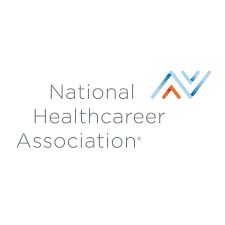
Pharmacy Chaos: The Necessary Support is Standing Right Beside The Pharmacist

There is countless research that highlights the skills and value technicians provide as pharmacy support staff.
Do more with less. This philosophy has raised some eyebrows within chain pharmacies. In her recent New York Times story,
But does the issue lie with the pharmacist, with corporate offices, or perhaps even with state-level regulatory bodies? Pharmacists are only human and, therefore, bound to make an occasional mistake. But add understaffed stores, the need to multitask, and burnout to the list of pharmacists’ challenges, and it poses additional challenges.
Of course, every pharmacy professional puts the health and safety of the patients they serve first and foremost, but does more need to be done at the corporate headquarters or with state regulations to allow for more support to be given to the pharmacist? I think the answer is yes, and in fact, the solution is most commonly standing side by side with the pharmacist.
The New York Times article noted that a national medication errors study has not been completed in more than a decade, but the Institute of Medicine estimated in 2006 that medication mistakes harm at least 1.5 million Americans each year. With approximately 70% of prescriptions nationwide being dispensed by chain drugstores, it seems like the best place to start a workforce transformation.
Pharmacists struggle to fill prescriptions, give immunizations, work the drive-through, answer phones, and communicate with patients, doctors, and insurance companies—trying to perform all these functions at the highest level without mistakes. The compelling question about this list of duties is how many could be managed, completed, or assisted by a properly trained and certified pharmacy technician (CPhT)? The astounding answer is all of them—except for situations in which direct patient counseling is needed. If that is the case, why then is the pharmacy profession stuck discussing the technician scope of practice guidelines when we have a potential pharmacy “crisis” on our hands?
Some may argue that the lack of standardization for pharmacy technician education, training, and certification is the issue. State boards of pharmacy have traditionally set the precedent. We are seeing some positive change but are still experiencing some disconnect for technician support.
Aside from regulation, there is countless research that highlights the skills and value technicians provide as pharmacy support staff. Therefore, why are we not coming together more as an industry to better support them in return? The bigger picture result is a better work environment and fewer patient medication errors.
Here are a few of the most influential facts that I associate with the current state:
- Pharmacy technicians receive a variety of education and training through various programs, such as academic, career and technical education, military, employer-based, and on-the-job training. Completion of any of these is required to be eligible to take a certification exam. Therefore, successfully passing a nationally accredited certification exam can and should be used as the minimum standard to validate that the necessary knowledge and skills have been obtained by an individual.
- State boards of pharmacy must lead the way to developing and/or adopting pharmacy technician language that supports their skills and abilities, which also allows for professional growth and expansion. There are still 7 states that do not require either education/training, registration, or licensure.1
- Pharmacists need to trust in the authority of delegation. The majority of health care professions (outside of direct medical providers) work within this model and have for many years without any major medical debate.
- Pharmacists are advocating to be seen and recognized as community health care providers and leaders while seeking reimbursement for services provided. They have every right to do so based on their level of education and training. When successful, communities see increased access to services, higher medication adherence rates, and reap other benefits as well. But in order to accomplish this, pharmacists must have the time to perform more patient-facing clinical services. Technicians are capable, and in many states are allowed, to perform tasks most commonly performed by a pharmacist. In fact, pharmacists spend only 21% of their time performing non-dispensing duties instead of providing clinical services.2
So perhaps the response to the problems articulated within The New York Times article could be easier than we think. As pharmacy leaders and regulators, how do we get out of our own way and ensure the safety of our patients? Trust, specialized training, requiring nationally accredited certification, and the willingness to delegate seem like very small adaptations to make to affect a huge difference in the lives of the approximately 1.5 million Americans potentially harmed as a result of these challenges and mistakes.
References
- Mattingly, A.N. Entry-level practice requirements of pharmacy technicians across the United States: A review. Am J. Health Syst. Pharm. 2018, 75, 1057-1063. {CrossRef}.
- NACDS, Pharmacy Technician Role Expansion: An evidence-based position paper, 2018.
Newsletter
Stay informed on drug updates, treatment guidelines, and pharmacy practice trends—subscribe to Pharmacy Times for weekly clinical insights.













































































































































































































